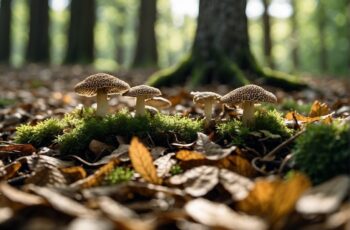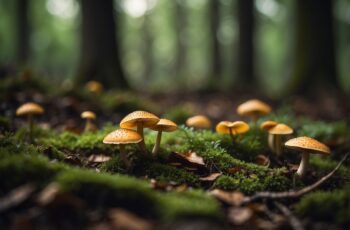Morel mushrooms are a springtime delight for foragers and mushroom hunters alike. These highly sought-after fungi are not only a culinary treat but also a signal that the forest is waking up from its winter slumber. As you venture out into the woods, you’ll find that morels can vary in appearance, flavor, and habitat. Whether you’re new to morel mushroom hunting or an experienced forager, the adventure of seeking out these elusive mushrooms adds an element of excitement to your outdoor pursuits.
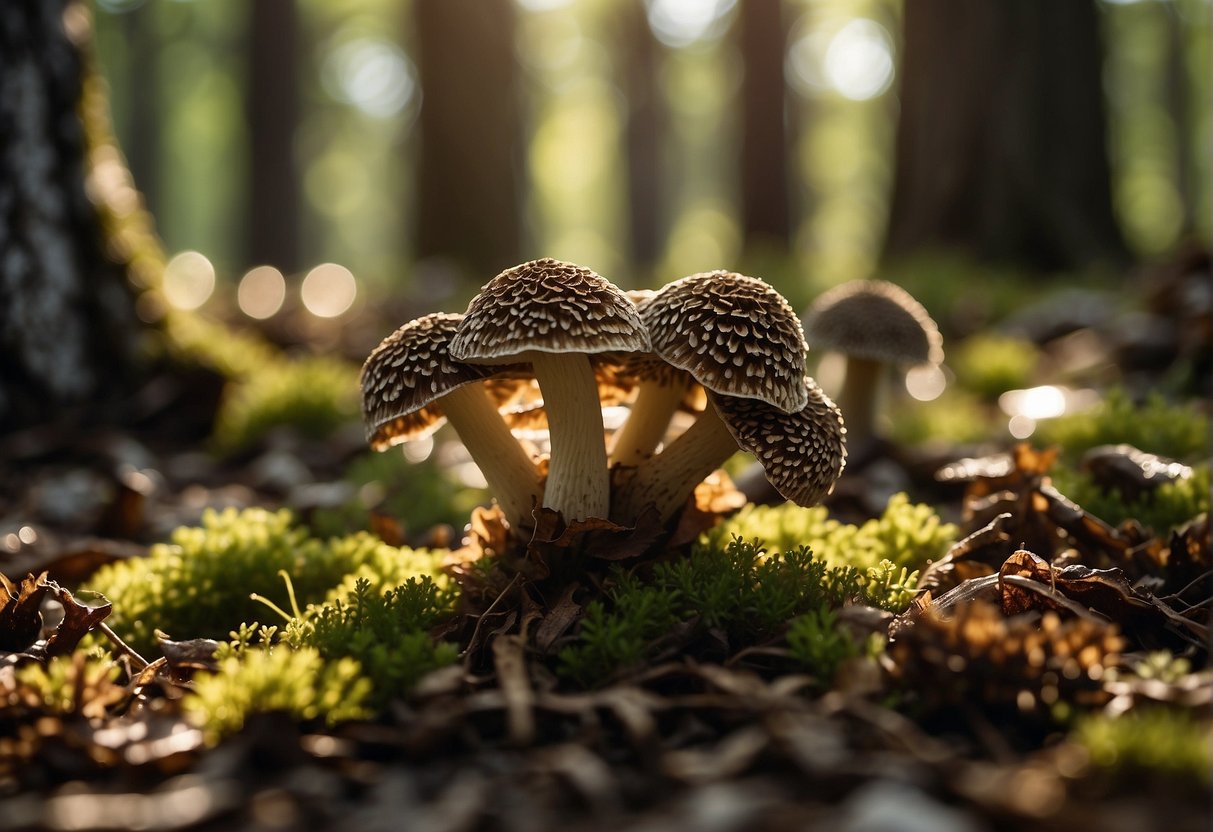
Understanding the different varieties of morels is crucial for a successful hunt. Morels are distinguished by their unique honeycomb-like appearance, with ridges and pits throughout their caps. The color of morel mushrooms can range from blonde to deep brown, and they vary in size and shape. While hunting for morels, be sure to familiarize yourself with their look-alikes as well, ensuring a safe and rewarding foraging experience.
Spring is the prime time for morel mushroom hunting, and knowing when and where to look can greatly increase your chances of a bountiful harvest. Morels tend to prosper in forested areas, particularly where the soil is moist and rich in organic matter. They often emerge in areas disturbed by floods or fires, hiding among the underbrush or at the base of certain trees. Keep your eyes peeled for these treasures of the forest, and remember that patience and persistence are your allies in the quest for morels.
Types of Morel Mushrooms
As you explore the world of foraging, it’s crucial to distinguish between the different types of true morels. Among these prized fungi, the Yellow Morel, Black Morel, and Half-Free Morel stand out for their unique characteristics and habitats.
Yellow Morel
Morchella esculentoides, commonly known as the Yellow Morel, presents with a distinct, honeycomb-like cap that’s attached to the stem at its base. You’ll recognize them by their tall, cone-shaped caps which can range from a pale cream to a rich, golden yellow. These morels are typically found in the spring, thriving in broadleaf woods and often in areas that have been burned or disturbed.
Black Morel
The Black Morel or Morchella angusticeps, is recognized by its darker, more conical caps. These caps are deeply ridged and also bear the typical morel honeycomb pattern. Black Morels tend to prefer the company of hardwood trees, especially ash, elm, and apple trees, and they’re usually among the first morels to appear as winter wanes.
Half-Free Morel
Distinguished by their caps which are only partially attached to the stem, Morchella americana, or Half-Free Morels, may be smaller than their cousins. They boast a cap that is elongated or bell-shaped, and they find their home in mixed hardwood and coniferous forests. While morel enthusiasts sometimes debate their culinary worth, Half-Free Morels certainly have their own unique appeal.
Be cautious when mushroom hunting, since false morels mimic morel appearance but can be toxic. Remember, true morels like these have caps that are attached to the stem and are completely hollow inside when sliced longitudinally. Always cross-check with a reputable guide or a seasoned forager before consuming any wild mushrooms.
Identification and Safety
When foraging for morels, accurate identification and knowledge of safety precautions are essential. Your ability to distinguish true morels from false ones can mean the difference between a delicious meal and a dangerous mistake.
Visual Identification
True morels have a distinct appearance with a honeycomb-like cap consisting of ridges and pits. They also have a completely hollow interior from the tip of the cap to the bottom of the stem. True morels vary in color from tan to dark brown. Pay close attention to these features to ensure you’re correctly identifying Morchella species, whether you’re looking at a yellow morel or another variety.
Habitat and Conditions
Morels typically grow in woodland areas, thriving in moist soils rich in organic matter. They often appear in the spring, near decomposing trees, especially elm, ash, and apple. When you’re mushroom foraging, remember to seek out these prime habitats, considering the environment as part of your identification process.
False Morels and Toxic Lookalikes
Be aware of false morels, like Gyromitra species, which can look similar to true morels but are toxic. False morels may have a brain-like or wrinkled cap and are not hollow inside. These mushrooms are often mistaken for true morels; therefore, familiarize yourself with their lookalikes to avoid a dangerous error. For comprehensive safety, only harvest mushrooms that you can positively identify as safe to eat.
Culinary Uses and Nutritional Value
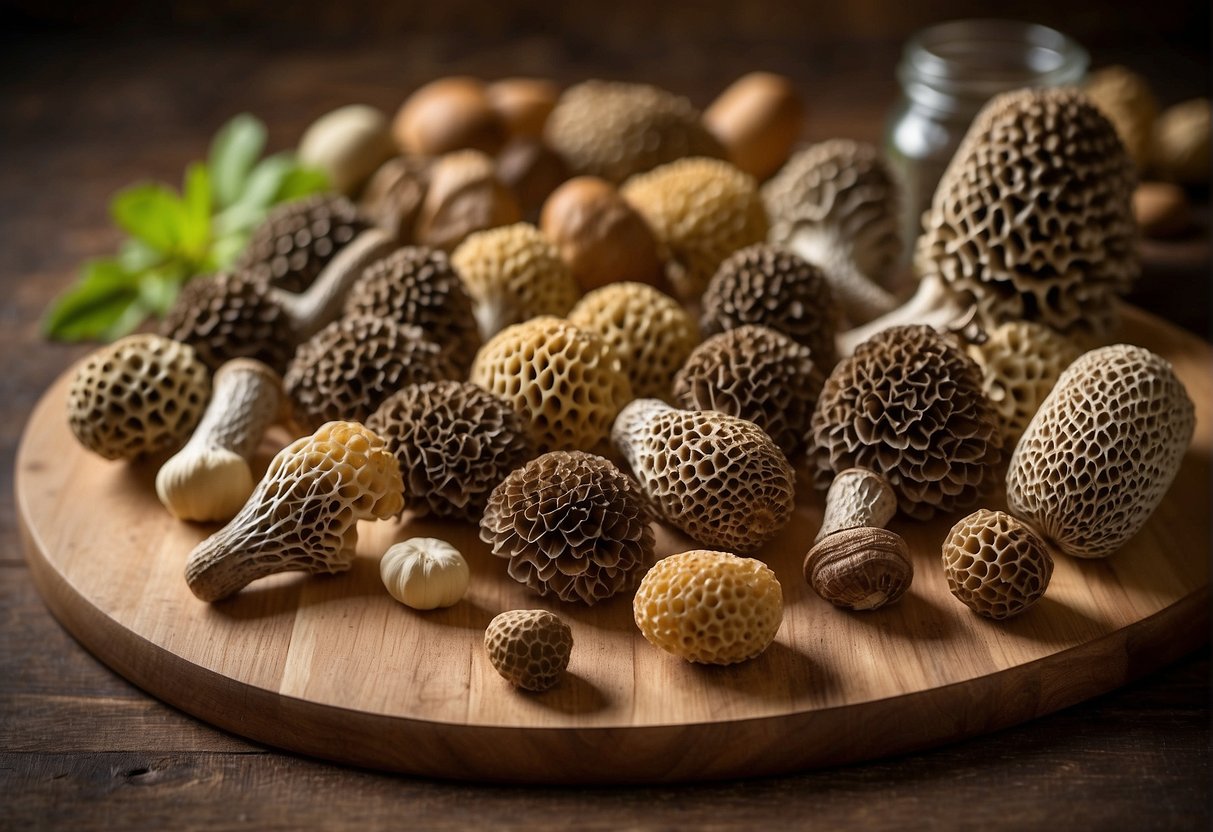
You’re in for a treat when you bring morels into your kitchen. Revered by chefs for their earthy flavor and unique texture, these edible mushrooms pack a punch both in culinary versatility and nutritional benefits. Here, you’ll uncover how to cook morels for optimum enjoyment and learn about their impressive health advantages.
Cooking with Morels
Morels are incredibly versatile in the kitchen. To start, clean your morels just before using them to maintain their structure. For the best flavor, sauté morels in oil or butter until they’re golden brown; this method highlights their nutty, woodsy taste. Remember, morels must be cooked before consuming to avoid any discomfort. They are not only adaptable to a variety of dishes from creamy pastas to hearty meat accompaniments but also enhance the flavor profile of each meal.
Health Benefits
From a nutritional standpoint, morels are a boon. They are notably high in fiber and vitamin D, two nutrients crucial for your well-being. One cup of morels contains significant amounts of vitamin D, vital for bone health and immune function. Additionally, their fiber content supports digestive health, making them a smart choice for a healthy diet. As edible mushrooms, morels don’t just elevate your culinary experience; they also contribute positively to your overall nutrition.
Conservation and Ethical Foraging
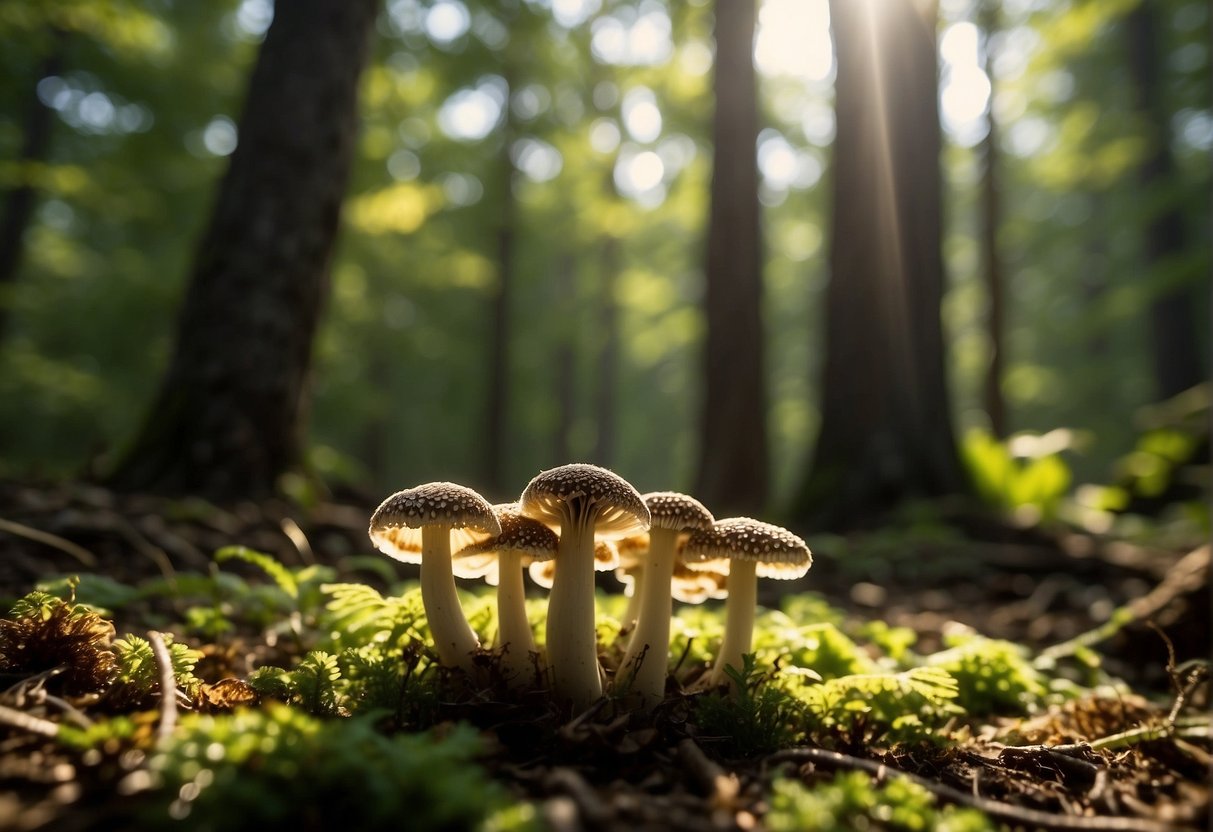
When embarking on your search for these prized fungi, it’s crucial to balance your excitement with responsibility. Let’s discuss how you can harvest morels sustainably and contribute to their ongoing proliferation.
Sustainable Harvesting Practices
Harvesting morels sustainably ensures that you and others can continue to enjoy mushroom hunting season after season. Here are the key points:
- Use Mesh Bags: Carry your finds in a mesh bag. This allows the spores of the morels to spread as you walk, promoting future growth.
- Cut, Don’t Pull: Use a knife to cut the mushroom at the base. Pulling can damage the mycelium, the vital underground network from which morels grow.
- Limit Your Harvest: Be mindful of how much you collect. Overharvesting can lead to a decline in populations. A rule of thumb is to take less than half of what you find.
Fostering Morel Growth and Habitat
You can play a part in conserving morel habitats and supporting mushroom season. By recognizing and preserving areas where morels thrive, such as wild and recently burned sites, you are not just a forager but a steward of the land.
- Avoid Trampling: Be careful not to disturb the area more than necessary. Especially in the fragile environments of recent burn sites, where the soil is delicate.
- Promote Awareness: Educate others about ethical foraging. When more foragers are aware of the need for conservation, the morel habitats are better protected.
- Contribute to Science: Report your findings to local conservation groups or mycological societies. Your observations can help track morel populations and health.

